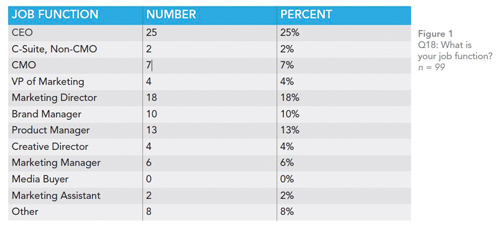 By Dave Bell
By Dave Bell
While there are many ways to market an app, from social media to news articles to influencers, none has as much of an impact as App Store Optimization (ASO).
ASO is a group of mobile marketing strategies and best practices that can help apps increase their overall search discoverability on the app stores and boost conversions across all channels. ASO includes search optimization, conversion rate optimization and optimization of engagements inside the apps.
So why is ASO so effective? This is because 70% of all app downloads originate from initial discovery inside the App Store and Google Play: even when all of the marketing dollars for app installs are taken into account.
In order to start maximizing growth on the app stores, it’s important to understand what ASO is, why it’s key to app marketing and how it can be leveraged for growth.
How does ASO differ?
ASO software allows marketers to track all of the keywords that an app ranks for, analyze conversion trends within their category and gain an understanding of how all marketing efforts are impacting performance.
As a result, ASO as a channel has one of the strongest influences on the presence of an app in the stores. This is due to the way store algorithms work: the Apple App Store and Google Play Store look at app metadata and conversion rate of an app to determine its keyword rankings. Other factors, such as volume and velocity of traffic from external sources, are also considered by the algorithm.
One key differentiator that makes ASO a powerful channel is how it places apps in front of users actively searching for them. This is more effective than advertisements or incentivized installs via offers. Users searching for features or competitor brand names already have the intent to download an app like yours: which makes them better targets than users engaged in another activity.
Why ASO is key
ASO is the key to app marketing as it sets the foundations for search discovery. Incorporating it into a marketing program can help an app generate visibility in the area where the majority of users go for their apps.
In order to be discovered in searches and improve conversions, marketers and developers should ensure their metadata and creatives are optimized. This will help their apps cater to the algorithms as well as users searching in the stores.
Without an optimized approach, it can be difficult for apps to rank in searches for high volume keywords or gain installs. Even if a marketer runs paid marketing and influencer campaigns, it is still necessary to leverage organic traffic to sustain the app and drive down the overall cost per install.
The criticality of data
The code to the ASO key lies in the data. But the data you use needs to come directly from app stores. To most people this would seem like common sense, but what largely goes unspoken in the mobile industry is that Apple and Google do not share key data including search volume and download volume from keywords in their stores.
Many tools that are commonly used for ASO have attempted to solve this problem by patching in data from the web or paid search to “stand in” for what they can’t get directly from the app stores.
Unfortunately, this approach leads to significant missed opportunities and wasted time. There is only a 20% overlap between web data and mobile data. This is because mobile user behaviour more closely resembles eCommerce user behaviour than web search and discovery. What people search for, their search intentions and conversion drivers are completely different.
Some tools have turned to paid search data to form their search volume estimates for ASO, but this approach is also fatally flawed. This is because most paid search data and tools in the market don’t take into consideration how decision-making for a search engine marketing campaign differs from decision-making in an organic search program.
If a developer attempts to optimize their app using inaccurate source data the wrong keywords will be selected, screenshots will not resonate with the target audience, and there will be a general failure to achieve scale. All forms of user acquisition become more expensive when the marketing funnel is broken in this way.
At Gummicube, we use our DATACUBE technology, which accurately forecasts search volume and trends inside the App Store and Google Play using a combination of big data aggregation and machine learning. There are certainly other tools in the marketplace, however it is always important to ask where the data is coming from and validate that any answer is truthful before signing up to use any ASO technology or service.
Getting going
App Store Optimization is one of the most important channels for app marketing. The influence ASO can have on organic impressions and installs far outweighs that of any other channel, so it’s essential that marketers know what it is and how to use it.
With both an understanding of the stores’ algorithms, the tools to properly optimize for them and the right data app, marketers can start to reap the benefits of ASO.
Dave Bell is co-founder and CEO, Gummicube.


